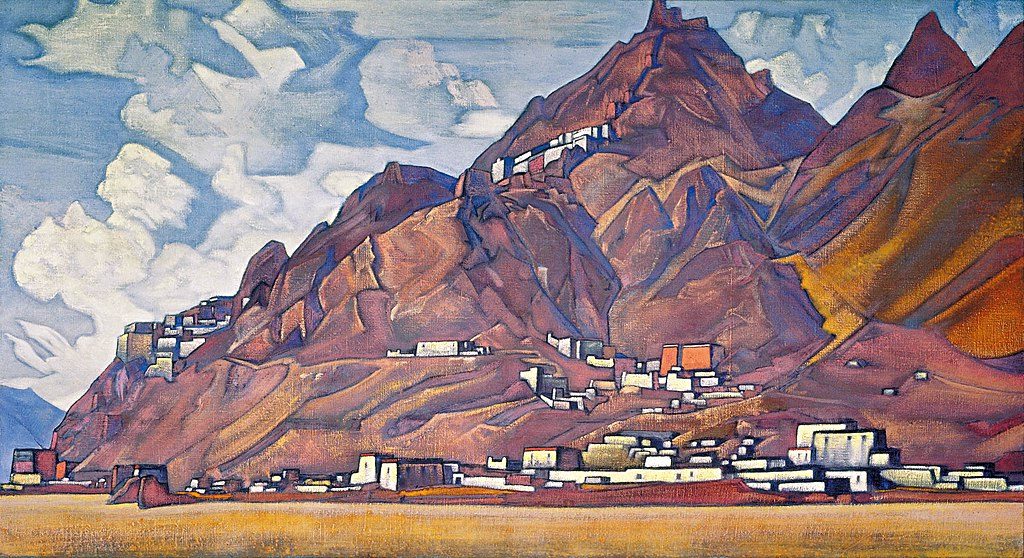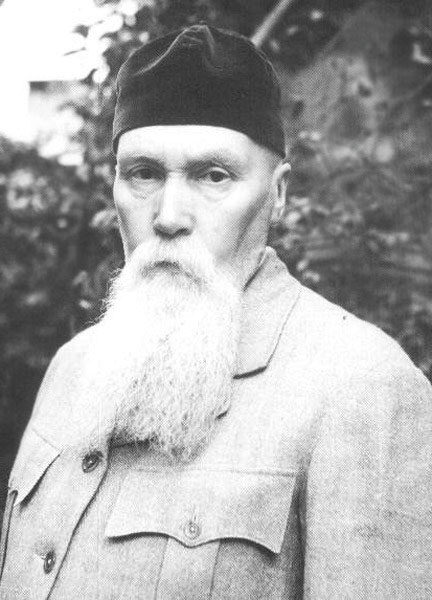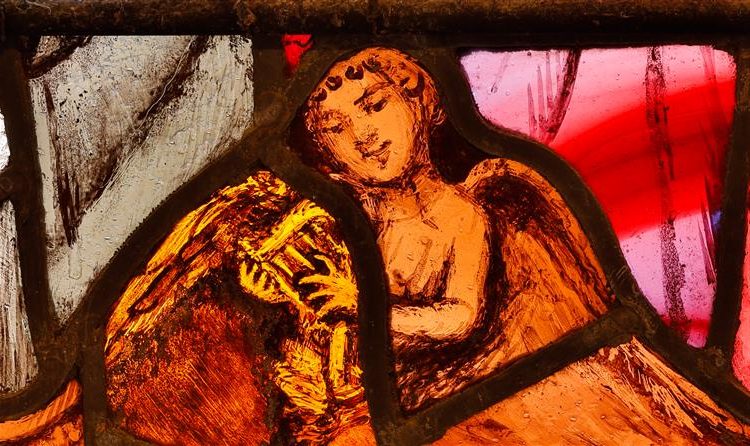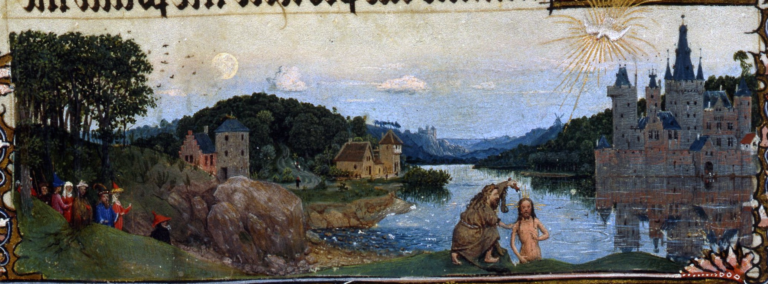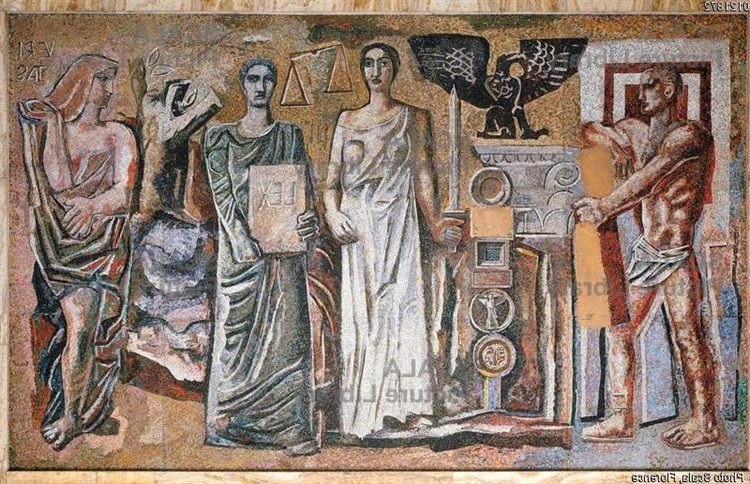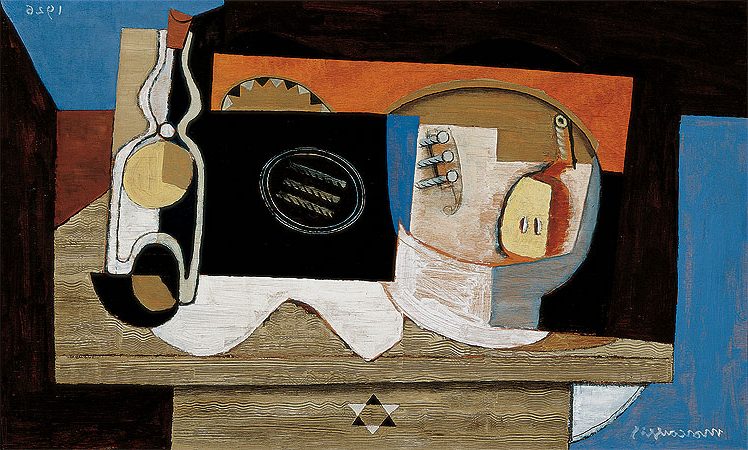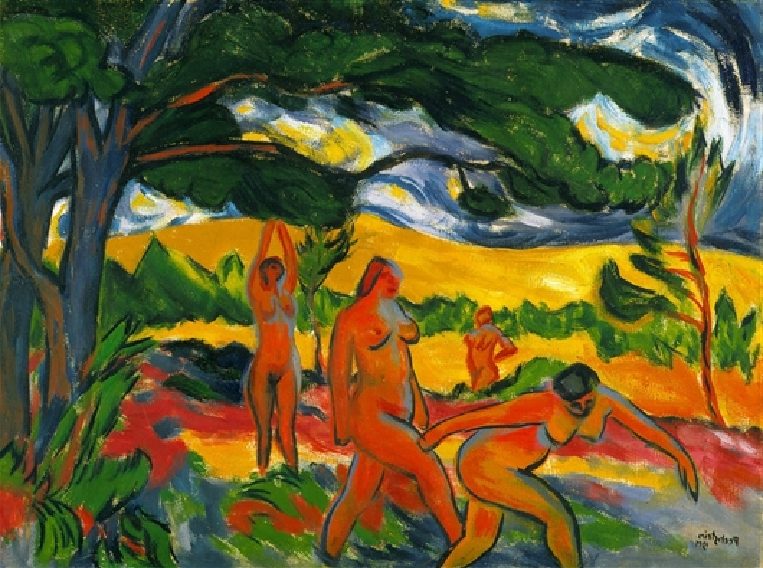Nicholas Roerich: Painter and Visionary of Mystical Landscapes
Born: October 9, 1874, Saint Petersburg, Russian Empire
Death: December 13, 1947, Naggar, Dominion of India
Mouvement artistique : Symbolisme
Nationalité : Russe
Institution : Académie impériale des arts
Nicholas Roerich: Painter and Visionary of Mystical Landscapes
Life and Career of Nicholas Roerich
Nicholas Roerich led a remarkable life spanning multiple continents and disciplines. His journey from Russia to international acclaim was marked by artistic innovation, cultural preservation efforts, and humanitarian work.
Vie et éducation précoces
Nicholas Roerich was born on October 9, 1874, in St. Petersburg, Russia. He grew up in a cultured household where he was exposed to literature, music, and the arts from an early age.

And We See, from the “Sancta” Series, 1922, by Nicholas Roerich
As a young boy, Roerich displayed a natural talent for drawing. By sixteen, he began seriously considering a career in art, though his path wasn’t straightforward.
Roerich pursued a dual education, studying law at St. Petersburg University while simultaneously attending the Imperial Academy of Arts. This combination of legal and artistic training would later inform his work in cultural preservation.
His formative years in Russia shaped his artistic vision and planted the seeds for his lifelong fascination with history, archaeology, and spiritual traditions.
Rise to Prominence in Russian Art
Roerich quickly established himself as a significant figure in Russian art circles. His distinctive style blended symbolism with rich color palettes and historical themes.
He became a key collaborator in Sergei Diaghilev’s famed Ballets Russes. His breakthrough came through his innovative set designs for productions like Igor Stravinsky’s “The Rite of Spring.”
The Russian Revolution of 1917 proved a turning point in Roerich’s life. Political upheaval forced him to leave his homeland, first to Finland and later to the United States.
Despite this displacement, Roerich’s artistic reputation continued to grow internationally. His paintings of mountainous landscapes, particularly of the Himalayas, became his signature works.
Cultural Impact and the Roerich Pact
Beyond painting, Roerich was a prolific writer, philosopher, and archaeologist. His expeditions to Central Asia and Tibet yielded not only artistic inspiration but important cultural research.

And We Are Opening the Gates, from the “Sancta” Series, 1922
Roerich’s most lasting legacy may be his humanitarian work. He proposed the Roerich Pact, an international treaty signed in 1935 by members of the Pan-American Union. The pact established legal protection for cultural sites during times of war.
For his peace efforts, he received multiple nominations for the Nobel Peace Prize. The “Banner of Peace” symbol he designed—three dots within a circle—continues to represent cultural preservation worldwide.
His unique combination of artistic vision and humanitarian action established Roerich as more than just a painter, but as a cultural bridge-builder whose influence continues today.
Artistic Philosophy and Works
Nicholas Roerich developed a unique artistic vision that blended spiritual themes with vibrant landscapes. His work embodied his belief that art could serve as a bridge between cultures and as a path to higher consciousness.
Symbolism and Spiritual Themes
Roerich’s art is deeply rooted in symbolism, reflecting his spiritual beliefs and interest in Eastern philosophies. He used vibrant colors and simplified forms to communicate transcendental ideas beyond the material world.
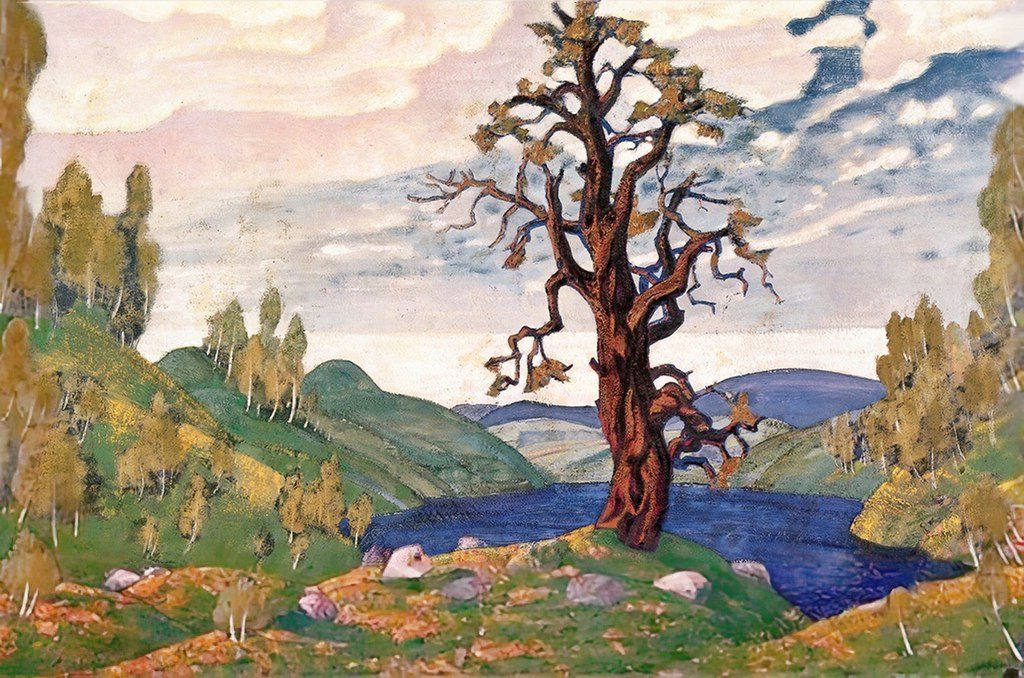
Kiss to the Earth, 1912, by Nicholas Roerich
His paintings often feature mountains as symbols of spiritual ascension and enlightenment. The Himalayas, which he studied extensively during his travels in Asia, became a recurring motif representing the meeting point between earth and heaven.
Religious themes appear frequently in his work, drawing from various traditions including Christianity, Buddhism, and Hinduism. Paintings like “Krishna” and “Mother of the World” showcase his interest in universal spiritual concepts rather than specific dogmas.
Nature in Roerich’s work isn’t merely decorative but serves as a vessel for spiritual meaning. His distinctive use of tempera on canvas created luminous effects that enhanced the mystical quality of his landscapes.
Peintures et expositions notables
Roerich produced over 7,000 paintings during his lifetime, with many housed in dedicated museums worldwide. His “Himalayan Series” stands as perhaps his most recognized work, capturing the majestic mountains in otherworldly blues and purples.
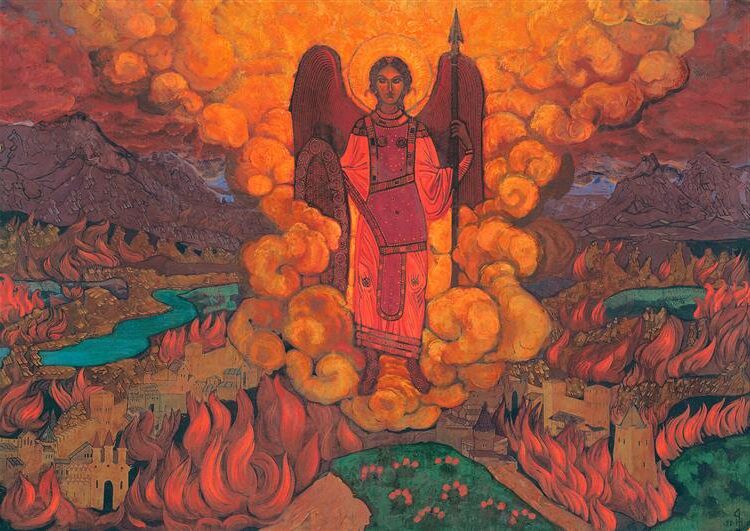
The Last Angel, 1912, by Nicholas Roerich
“The Last Angel” (1912) represents his early symbolist period, while “Star of the Hero” showcases his mature style with its cosmic themes and brilliant color palette. “Great Spirit of the Himalayas” exemplifies his ability to capture both physical landscapes and spiritual dimensions.
His work gained international recognition through major exhibitions in Europe and America. The Nicholas Roerich Museum in New York, established in 1923, continues to preserve and display his artistic legacy.
Roerich’s paintings were often displayed alongside explanations of their philosophical meanings, creating an immersive experience that went beyond visual appreciation.
Literary Contributions and Influence
Beyond painting, Roerich expressed his artistic philosophy through numerous writings. His essays on art emphasized its role in cultural evolution and spiritual awakening.
He published several books including “Heart of Asia” and “Altai-Himalaya,” which documented his expeditions while exploring connections between art, science, and spirituality. These writings complemented his visual work, providing context for his symbolic imagery.
Roerich believed in the concept of “Beauty” as a transformative force. He wrote: “Where there is Beauty, there is Peace,” emphasizing art’s potential to elevate humanity.
His ideas influenced numerous artists and thinkers who shared his vision of creativity as a spiritual practice. The Roerich Pact, a treaty he initiated to protect cultural treasures during wartime, demonstrates how his artistic philosophy extended into practical humanitarian efforts.
Héritage et monuments commémoratifs

And We Are Trying, from the “Sancta” Series, 1922
Nicholas Roerich’s influence extends far beyond his artwork, with permanent institutions dedicated to his memory and international recognition of his cultural preservation efforts. His vision for protecting art during wartime continues to impact global heritage policies.
Nicholas Roerich Museum
The Nicholas Roerich Museum in New York City serves as the primary repository of his artistic legacy. Located in a townhouse on Manhattan’s Upper West Side, the museum houses over 200 paintings displayed across three floors.
The museum provides visitors with a comprehensive view of Roerich’s artistic evolution and philosophical ideas. Founded during Roerich’s lifetime, it continues to preserve his vision and promote his humanitarian ideals.
Art enthusiasts can explore his famous Himalayan landscapes, alongside works reflecting his interest in spiritual and mystical themes. The museum also maintains an archive of his writings and personal artifacts.
Global Recognition and Cultural Preservation
Roerich’s most enduring legacy is the Roerich Pact, an international treaty signed in 1935 for the protection of cultural treasures during armed conflicts. The pact established the Banner of Peace symbol to mark protected cultural sites.
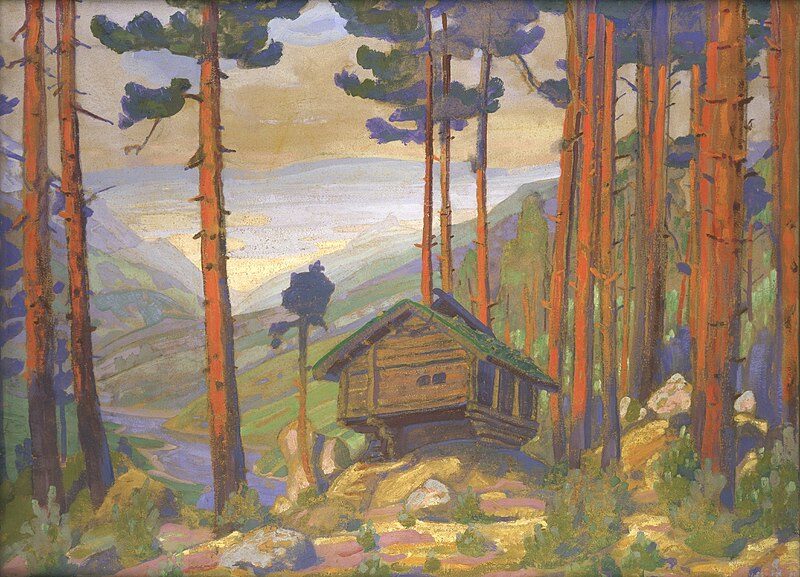
Solveig’s Song, 1912, by Nicholas Roerich
Major Russian institutions including the Russian Museum, State Tretyakov Gallery, and State Museum of Oriental Art maintain significant collections of his work. His paintings are considered national treasures in Russia, where his childhood home has been preserved as a memorial.
The artist’s commitment to preserving cultural heritage continues through organizations worldwide that bear his name.
Questions fréquemment posées
Nicholas Roerich’s life and work generate many inquiries from art enthusiasts and scholars worldwide. These questions touch on his artistic techniques, philosophical beliefs, family relationships, and historical significance.
Where can I find Nicholas Roerich’s paintings for sale?
Nicholas Roerich’s paintings can be found at major auction houses like Christie’s and Sotheby’s. These auctions typically feature his works several times yearly.
Reputable art galleries specializing in Russian art often have Roerich paintings available for purchase. The Nicholas Roerich Museum in New York occasionally sells authenticated prints, though original works are rarely available directly from the museum.
Online platforms like Artsy and specialized Russian art dealers also list Roerich’s works. Buyers should always verify authenticity through provenance documentation and expert authentication before purchasing.
What role does the concept of Shambhala play in Nicholas and Helena Roerich’s works?
Shambhala, the mythical kingdom from Tibetan Buddhist tradition, became central to both Nicholas and Helena Roerich’s spiritual philosophy. Nicholas depicted Shambhala in numerous paintings, portraying it as a mystical realm in the Himalayas.
Helena Roerich incorporated Shambhala concepts into her writings on Agni Yoga, their spiritual teaching. The Roerichs believed Shambhala represented humanity’s spiritual potential and future evolution.
Their Central Asian expeditions were partly motivated by searching for evidence of Shambhala. This concept influenced their artistic and literary output, becoming a unifying theme throughout their life’s work.
How did the Himalayas influence Nicholas Roerich’s artwork?
The Himalayas profoundly transformed Roerich’s artistic style after he settled in India in 1928. The mountains’ dramatic landscapes inspired his most recognizable works featuring vibrant colors and spiritual symbolism.
Roerich developed a distinctive palette of blues, purples, and pinks to capture the unique Himalayan light. He portrayed the mountains not merely as geographical features but as spiritual entities embodying cosmic energy.
His Himalayan paintings often included ancient temples, travelers, or mystical figures to convey the region’s spiritual significance. These works reveal Roerich’s belief that the Himalayas were a sacred nexus connecting earthly and celestial realms.
Who was Svetoslav Roerich in relation to Nicholas Roerich?
Svetoslav Roerich was Nicholas Roerich’s younger son, born in 1904. He became an accomplished painter in his own right, developing a style distinct from his father’s while maintaining similar spiritual themes.
Svetoslav managed the Roerich family’s affairs in India and served as a cultural ambassador. He married the Indian film actress Devika Rani in 1945, further strengthening the Roerich family’s connection to India.
After his parents’ deaths, Svetoslav preserved their legacy through the maintenance of their home in Naggar, India. He continued painting and promoting his family’s philosophical and artistic vision until his death in 1993.
In what year did Nicholas Roerich die, and what was his cause of death?
Nicholas Roerich died on December 13, 1947, at his home in Naggar, Kullu Valley, India. He was 73 years old at the time of his passing.
The cause of his death was heart failure following a prolonged illness. His health had been declining in the final years of his life, though he continued painting until shortly before his death.
Roerich was buried according to Indian tradition in the Kullu Valley with a view of the Himalayan mountains that had inspired his most famous works.
What notable contributions did George de Roerich make to the Roerich legacy?
George de Roerich (Yuri Nikolayevich), Nicholas’s elder son, became a distinguished Tibetologist and linguist. He mastered over 30 Asian languages and dialects.
His mastery enabled crucial translations of Buddhist texts. During the Roerichs’ Central Asian expeditions, George served as the primary translator and scientific coordinator.
His scholarly work “Trails to Inmost Asia” documented these journeys and became an important ethnographic record. George established the “Urusvati” Himalayan Research Institute in 1928.
At the institute, he conducted pioneering studies in botany, ethnology, and linguistics. His academic contributions helped validate the scholarly aspects of the Roerich family’s work beyond their artistic and spiritual pursuits.

